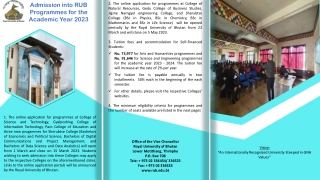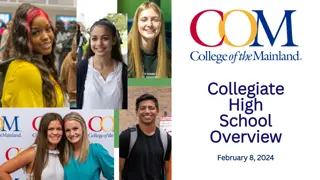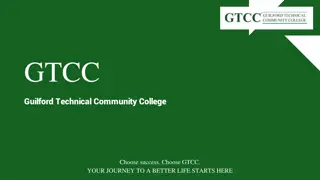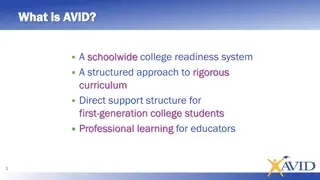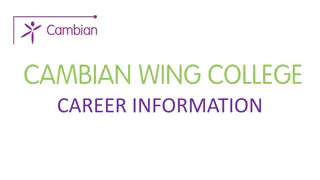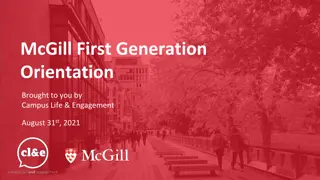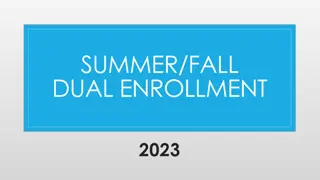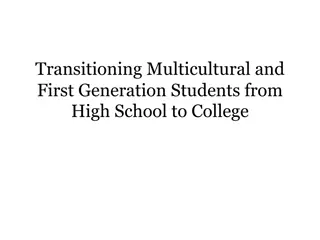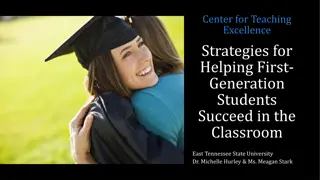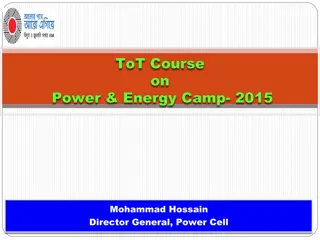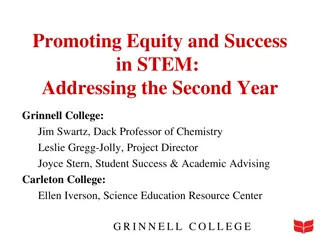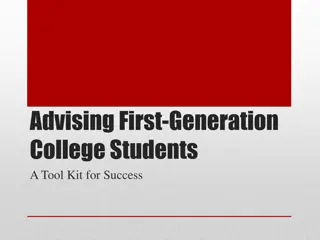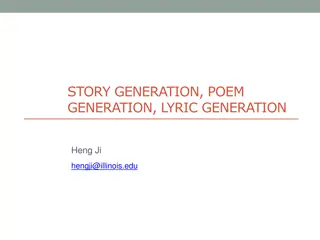Challenges Faced by First-Generation College Students
First-generation college students encounter various barriers and challenges that affect their educational journey and success rates. These students are more likely to be racial/ethnic minorities, low-income, and have dependent children. Despite attempts to enter college, they graduate at significantly lower rates compared to their second-and third-generation peers. Factors such as lower educational aspirations, academic underpreparedness, lack of family support, and dual cultural identities contribute to their struggles. Addressing these challenges requires creating supportive environments, providing necessary resources, and highlighting the value of higher education.
Download Presentation

Please find below an Image/Link to download the presentation.
The content on the website is provided AS IS for your information and personal use only. It may not be sold, licensed, or shared on other websites without obtaining consent from the author.If you encounter any issues during the download, it is possible that the publisher has removed the file from their server.
You are allowed to download the files provided on this website for personal or commercial use, subject to the condition that they are used lawfully. All files are the property of their respective owners.
The content on the website is provided AS IS for your information and personal use only. It may not be sold, licensed, or shared on other websites without obtaining consent from the author.
E N D
Presentation Transcript
Melissa Selby-Theut, MSW Director, Educational Support Program
Statistical Overview First-generation students: Comprise 34% of the population at colleges and universities nationwide. Are more likely to be racial/ethnic minorities, be low-income, and have dependent children. Enroll in and graduate from college at significantly lower rates that their second-and third-generation peers.
85% of second-and third-generation students attempt college after high school 47% of first-generation students attempt college after high school 68% of second-and third-generation students graduate with a bachelor s degree within 8 years 26% of first-generation students graduate with a bachelor s degree within 8 years
First-generation students graduate at a significantly lower rate, even when demographics, motivation, academic preparation, academic progress, grade point average, and income are accounted for!
BARRIER CHALLENGE Report lower educational aspirations More likely to enter college academically underprepared Reading comprehension and critical thinking do not improve at as high a rate Earn lower GPAs and take fewer academic hours Avoid majors and courses in math, science, and humanities Create an environment that affirms students strengths and encourages their educational pursuits Provide opportunities for supplementary instruction, remedial instruction, and/or learning skill development Demonstrate the value of liberal education
BARRIER CHALLENGE Less likely to identify college as necessary to achieving goals Parents lack college knowledge related to navigating the college environment Only 50% identify their parents as supportive of their decision to attend college [Live] simultaneously in two vastly different worlds while being fully accepted in neither Demonstrate the long-term benefits of a college education Integrate with family to create buy-in when possible and/or appropriate; encourage autonomy as necessary Assist students in recognizing and accepting their dual roles Provide culturally-sensitive services that address the specific needs of first- generation students
BARRIER CHALLENGE More likely to live off-campus Less likely to participate in on- campus organizations/events Identify their closest friends as full-time employees rather than college students Report higher rates of isolation and discrimination Perceive faculty as distant or unconcerned with them as individuals Provide cost-effective housing options and/or ways to integrate with Housing programs and initiatives Target first-generation students when advertising organizations and events Foster a safe and inclusive campus community Create opportunities for first- generation students to form relationships with faculty
BARRIER CHALLENGE Uninformed about financial aid forms, processes, etc. More likely to have additional financial obligations Have fewer resources to pay for college Nature of and time allotted to work differ from that of second-generation students More likely to meet employment obligations than academic obligations Supply materials about financial aid and the financial aid process that are easy to access and easy to understand Assist students in minimizing out-of-pocket costs Provide ample opportunities for on-campus employment
What Works Outside of the classroom Ensuring that students are socially integrated Providing intensive, holistic support services Forming authentic relationships between students and staff Recognizing and celebrating diversity Within the classroom Ensuring that students form relationships with faculty and feel appreciated as individuals Recognizing the unique circumstances of first- generation students and allowing flexibility as appropriate Focusing on improving reading comprehension, critical thinking, and mathematical abilities
Resources Student Academic Success Center Educational Support Program Pre-Major Program Advising Learning Skills Support Tutoring Center Structured Learning Assistance (SLA) Math and Science Student Support (MS3) College Academic Advising Centers The Fred Meijer Center for Writing and Michigan Authors (Writing Center) Math and Stats Labs Counseling and Career Development Center Career Services Financial Aid Office Zumberge / Steelcase Libraries Office of Housing and Residence Life Office of Student Life
References Billson, J., & Brooks, T. (1981). In Search of the Silken Purse: Factors in Attrition Among First-Generation Students. Presented to the Annual Meeting of the Association of American Colleges. Denver, CO. Engle, J, Bermeo, A., & O Brien, C. (2006). Straight from the Source: What Works for First-Generation College Students. Pell Institute for the Study of Opportunity in Higher Education. Washington, DC. Murphy, C., & Hicks, T. (2006). Academic Characteristics Among First-Generation and Non-First- Generation College Students. College Quarterly, vol. 9. Terenzini, P., Springer, L., Yaeger, P., Pascarella, E., & Nora, A. (1995). First-Generation College Students: Characteristics, Experiences, and Cognitive Development. Association for Institutional Research. Boston, MA. First-Generation Students in Postsecondary Education: A Look at Their College Transcripts. (2005). National Center for Education Statistics Descriptive Analysis Report.


